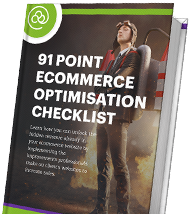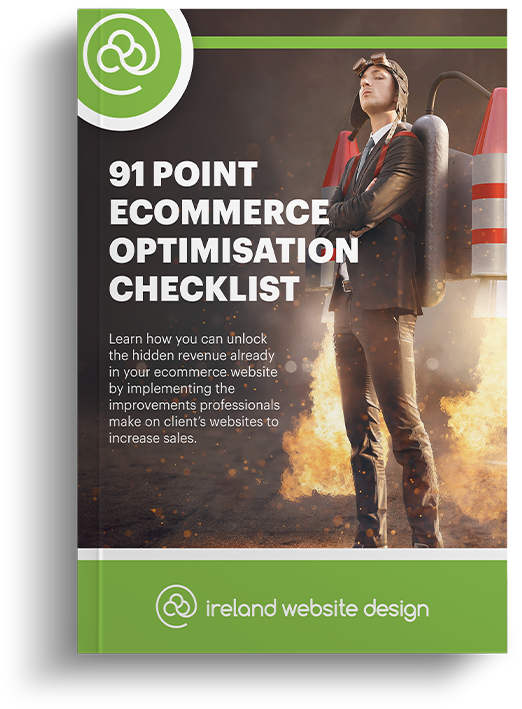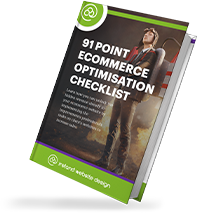When your website isn’t producing the results you want it’s usually down to some kind of problem getting your users to convert. If you fix this problem you’ll be able to see more engagement, a higher conversion rate and ultimately, an increase in sales.
There are a few issues that can attribute to poor conversion rates and low engagement from customers but unfortunately, you can’t just make a few small changes and radically improve your situation overnight.
You need to be able to understand what’s actually wrong with your website before you can begin to fix it.
So, take a step back and diagnose how you can identify why certain aspects of your website aren’t working and how you can then go about fixing these problems.
How do I diagnose conversion and engagement problems?
You can use heatmaps to help diagnose problems visitors have using your website. They help you visualise the most popular and unpopular areas of your site using a colour scale.
The scale is simple, red indicates the area of your site that is most active and blue indicates the area of your site that isn’t as active.
By using heatmaps, you can aggregate the behaviour of your users and collect a decent data analysis. Heatmaps are the perfect tool for understanding how people interact with your website, what they click on, how far they scroll down and what parts of the site they completely ignore.
Low clickthrough rate (CTR) on calls-to-action (CTAs)
Low CTR on CTAs is one of the most common problems that can happen with customer engagement and conversion. What this means is that there aren’t enough users clicking where you want them to when they get to your website.
How to identify low CTR?
If you’re using heatmaps to diagnose your website you can see whether your CTAs are being used depending on the colour hovering over your CTA button.
You want to aim to see yellow or red but if you’re seeing blue or no colour at all then this means that very few people are seeing your CTA and clicking on it.
How to use heatmaps to improve CTRS
You need to figure out the reason your CTAs aren’t getting enough clicks and one way you can do this is by using a form of heatmap called a scroll map.
A scroll map shows how far your users scroll down a webpage. They can be collected on desktop, mobile or tablet and the colour, like a regular heatmap, is used to represent the popular and unpopular parts of the page.
Percentages are also given to let users know how many people have ventured to certain depths of their page.
By using scroll maps to figure out how many people are scrolling to the point on your page where your CTA is. If not a lot of users are getting that far then you won’t get a lot of people clicking on your CTA.
Bearing this in mind you will be able to move your CTA to a more suitable location on your site to get more clicks.
Low completion rate on forms
When you have a form open for your customers to fill out, but it keeps going unfinished before submission, then this indicates that there is a problem with the form itself.
You got the customer to the form and compelled them enough to start filling it in but something got in their way and stopped them from finishing it.
How to identify low completion rates
You can identify low completion rates on your forms by using an overlay report. This is a tool that identifies every clickable element on your webpage or in this case your form and tells you what percentage of people clicked on each element.
Using this method you can identify what parts of the form people had no problem filling out and what parts caused them to click away before completion.
How do I fix my low completion rates?
The main reason why people will start to fill out a form and then decide not to finish it is that the form is asking for information they don’t want to hand out.
The form could also be too long and your visitor doesn’t feel as though it’s worth their time or they don’t believe the form is valuable enough for them to sacrifice detailed information.
To resolve your issue of low completion rates you can:
Consider what information you really need from your customers then cut out anything else. The fewer fields that have to be filled out by your customer will help stop the friction between your users and a conversion.
Offer something valuable in exchange for your user’s information. This approach will provide your user with an incentive to complete the form and convert.
High exit rate
When your users exit your website entirely the page they leave from is known as their “exit page”.
If a page has a particularly high exit rate it could mean that users aren’t being given a compelling reason to stay after reaching this page.
How to identify a high exit rate
It’s quite simple to identify high exit rates. Simply go to your Google Analytics account and click on Behaviour. From here go to Site Content and then Exit Pages.
You’ll be able to see a complete breakdown of all the exits across your chosen timespan as well as the exit rate for each one of your pages.
How do I fix my exit rates?
When you have high exit rates it is usually caused by one of several issues. If you can identify this issue then it will be easy to counteract it.
A heatmap report can show you where your users are clicking on their exit page. Are they getting distracted by third-party ads for example? Your visitors might be exiting your site by clicking on these adverts.
The next step is to find out where your visitors are going. Once you know this you can make changes to alter their behaviour.
For example, if a user clicks a link in your blog post and exits your website from here then you can make a simple adjustment to open these links in a new tab or window. This will prevent your users from being redirected before they finish reading your post.
Would you like to know more about improving your conversions? Get in touch with the team at Ireland Website Design and we can help you out.




